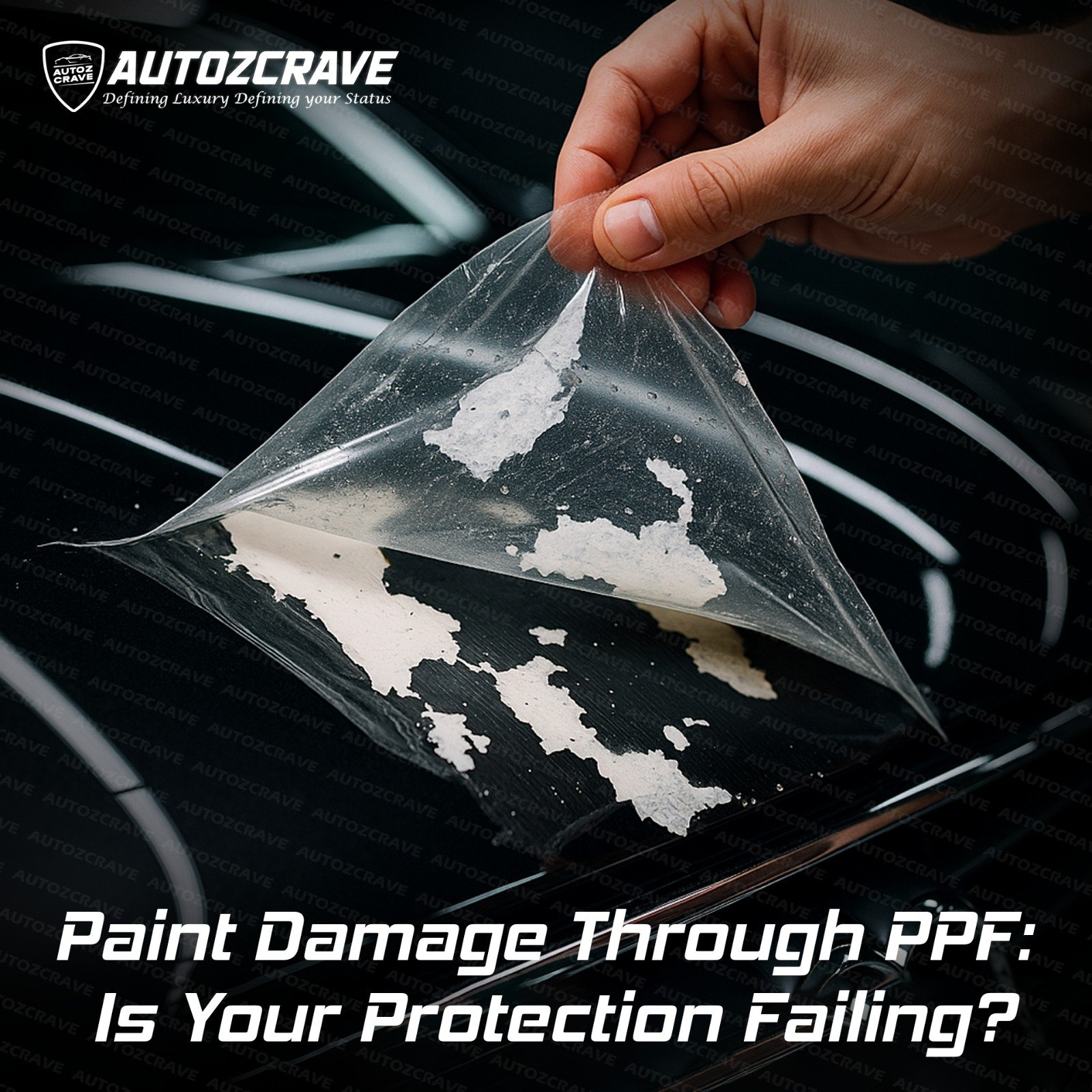Home Blog Details


Home Blog Details


Post By Autozcrave || 2025-06-16
Paint Protection Film (PPF) is made to protect your car's paint. It helps stop small scratches, stone chips, and UV damage. But many car owners see paint damage through PPF and wonder, “Is my PPF protection failing?”
If you're asking this question, you're not alone. Sometimes, even after installing PPF, the paint under it gets damaged. This blog will help you understand why this happens, how to check your PPF, and what to do if you see problems.

The most common reason for PPF paint damage is poor preparation before applying the film. Some detailers skip important steps like paint inspection. This causes the PPF to fail and leads to problems like paint chipped under PPF.
A big reason for paint protection film failure is that the car had been repainted before, but the detailer didn’t check it. Repainted panels don’t bond well with the metal. So when PPF is applied on top of them, the paint can peel off easily.
Many installers never check if a car is repainted or not. This is a major mistake.
Sometimes, PPF is installed over chipped, dirty, or low-quality paint. If the base paint is weak, the PPF protection issues will show up soon. The film may peel, bubble, or crack.
Here are some common signs that show your PPF is failing:
If you see any of these, it’s time to get your car checked.
Let’s look at some real causes of PPF damage to car paint:
|
Problem |
What Happens |
|
Paint not inspected before application |
Paint peels during removal |
|
Film applied on repainted panels |
Paint lifts off easily |
|
Surface not cleaned properly |
Film doesn't stick well |
|
Cheap film used |
Turns yellow, cracks |
|
Heat applied incorrectly |
Causes the film to shrink or bubble |
You can do a few simple checks to see if your PPF is still doing its job:
If you notice problems, you may need to replace it soon.
High-quality PPF usually lasts about 5 to 7 years. But if your car is often exposed to sunlight, pollution, or bad weather, it might wear out faster.
You should replace your PPF film if:
If your PPF is failing, follow these steps:
One of the most common problems is that detailers don’t inspect the paint properly before applying PPF.
That’s why our expert team always:
Uses tools to check paint condition
Looks for repainted or damaged panels
Fixes minor paint issues before installing PPF
Uses high-quality films that last longer
Your car deserves real protection, not a shortcut job.
1. Can I use PPF on a repainted car?
Yes, but only if the painter checks the paint first. Repainted cars can lose paint if not inspected.
2. How long does PPF last?
Good PPF lasts about 5 to 7 years with proper care.
3. What should I do if paint comes off with PPF?
Don’t remove more film yourself. Go to a trained PPF expert for help and proper repair.
4. Will cheap PPF turn yellow?
Yes, cheap or low-quality PPF turns yellow quickly under the sun.
5. What must be done before applying PPF?
The paint should be checked for damage or repaint
6. Why is PPF risky on a repainted car?
If a car is repainted, the new paint may not stick well to the body. When PPF is applied on top of it, the paint can peel off later, especially during removal. That’s why checking for repainted areas is very important.
7. How to check if a car is repainted before applying PPF?
Professional detailers use a paint thickness gauge to measure if any part was repainted. This tells them if the paint is original or not.
8. What happens if detailers don’t check for repaint?
If they skip the check and apply PPF on a repainted panel, the paint can chip off with the film. This is a major reason for PPF paint damage.
9. Can I apply PPF after repainting my car?
Yes, but only after the paint is fully cured (usually 30–45 days) and inspected properly. Applying too early or without checking may cause damage.
10. How can Autozcrave help with repainted car PPF?
At Autozcrave, we always check if the car is repainted before installing PPF. This helps prevent paint damage under PPF and gives long-term protection.